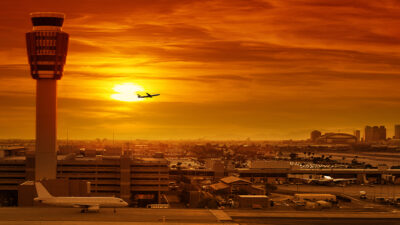SM4 Safety Articles & Resources
A wealth of knowledge provided by experts in aviation safety can be found here in our Aviation Safety Resource Library. From time-proven safety and risk management principles to updates on the latest in aviation safety regulation, you’ll find the information you need to strengthen the safety culture in your organization. The content available here can be used as curriculum in your organization’s safety systems, and the experts whose content appears here are available as aviation safety consultants and safety trainers.
Click on a category below or use the search tool on this page to find the resources you need. If there is a topic you would like to see us cover in the future, let us know by emailing us at Javascript must be enabled to see email addresses..

Part 108: The Next Step in BVLOS Integration and Drone Innovation
As the drone industry awaits the Federal Aviation Administration’s (FAA) forthcoming Part 108 regulations, the landscape of Beyond Visual Line of Sight (BVLOS) operations stands on the brink of transformation. These anticipated rules aim to standardize BVLOS flights, enabling more complex and expansive drone missions across various sectors.

Navigating Geopolitical Uncertainty Using Business Aviation
Bigger business jets mean bigger fuel tanks, longer trips, more border crossings, and bigger wallets! With an equipment upgrade also comes the requirement for a knowledge upgrade.

Giving the Hazard Log the Attention It Deserves
Safety risk profile. Hazard log. Hazard risk register. Whatever you call it internally, one thing is clear: It is a fundamental requirement in your safety management system.

Leadership, Accountability and Your Organization’s Risk Profile
Recent media attention has cast light on the unusual number of aviation system-related accidents, incidents and near-misses that have plagued our industry over the past several months.

Aviation Safety—Grounded!
When we talk about aviation safety, our attention often goes to aircraft operational concerns. They are important, but by no means do they represent all the risks in a flight department. So, what’s “the rest of the story”?

Mitigating Risk – Amidst the Chaos
There have been more high-profile aviation accidents in the last few months than in the last few decades. As we mourn those we have lost and aim not to make assumptions before final reports are completed, we must focus, personally and professionally, on assessing the risk of something similar happening within our aviation enterprises.

Data Sharing: The Heartbeat of Safety in the Skies
Flying today is anything but a simple, straightforward path. Pilots have multiple factors to consider for ensuring the safest and most sustainable flight experience.

The Insidious Nature of the Routine
When routine tasks become familiar and are no longer actively assessed for threats, they often are the first link in an error chain that results in a serious mishap. It is natural for crews to become comfortable with seemingly low-risk tasks, allowing complacency and distractions to permeate their focused attention.

Code Red: Planning for the Cyberattack Aftermath
This is an era of rapid change and technological advancement, and although it is challenging, responsible organizations seek to manage and mitigate cyber risks. Insecure systems and uncertain people, added to inadequate contingency plans, create a perfect business continuity storm in the aftermath of a cyberattack.

Let’s Get Personal (About Risk)
Aviation loves to talk about risk management. Insurance companies, manufacturers, and organizations all fully embrace the concept and know that to make it work on the line, we must get people at all levels and from all functional areas to embrace it. Tools such as the Flight Risk Assessment Tool (FRAT) are noble attempts, but at the core of it all lies the simple fact that people, as individuals, view risk differently.

Check Engine Light: The Illusion of Program Effectiveness
An aviation company’s responsibility is to ensure regulatory compliance and conformance to its internal policies, procedures and processes, including voluntary standards. To do that, leaders and team members throughout an organization must understand and monitor the “dashboard lights.”

Gaining Insight Into the Living DNA of a Safety Management System
Managing safety culture is like baking bread. It is a living organism, and no matter how you measure the ingredients and bake it, each loaf has its own unique shape, color and crumb. However, a multidimensional safety culture survey can be a vital tool for periodic assessment and improvement.

Rise Up for the Next Generation
There is no doubt in my mind that flying is the way mankind is meant to travel, yet the continued success and growth of the industry requires a refined approach to safety. As someone who flies commercially and with a new interest in a career in aviation, I want the reassurance that the pilot in command (PIC) and crew are adequately prepared if and when an aircraft ends up in an upset.

Cognitive Overload in Aviation Training: Understanding and Mitigating Risks
If we look through a microscope at the elements of “safety”, we see things that are often hidden. We secretly know that the rules don’t matter as much as the attitude of the company and the person using them. The reality is that the rules are simply a benchmark to form a circle of safety parameters around an organization to establish the minimum level of safety.

Peer Support Programs: Transforming How Aviation Addresses Mental Health
While the industry has evolved in acknowledging these issues, stigma still impedes many from seeking available resources. Here, the significance of Peer Support Programs (PSPs) has been increasingly recognized. These initiatives offer a confidential haven where concerns can be openly discussed, free from judgment.

How High Demand Can Lead to Decreased Professionalism
It’s a good time to be an aviation professional. Demand is high, and supply is low. Options are many. Wages are up. For the first time in years, professionals in the aviation industry have the upper hand. But there is a dark underbelly to these good times.

Preparedness and Protocols for Encountering Protests and Demonstrations
Civil unrest, workforce strikes and political demonstrations present unique safety elements for our global mobile aviation industry. Business aviation, despite a very low collective carbon footprint and many significant contributions to green energy initiatives, is unfairly and increasingly targeted by protestors.

FAR Part 91 Safety – What You Can Do Right Now
In a previous article (“FAR Part 91 Safety—Is It Time for a Wake-Up Call?”), we provided insights from 19 current directors of aviation about the state of safety in the…

More Than a Box Tick: Achieving Operational Flexibility With an FRMS
Moms know best. This adage holds true in many domains of family life—allergies, grades, crushes. When thinking about aviation safety, though, perhaps the best illustration drawn from mom’s expertise is…

The Effects of a Learning Mindset on Safety Culture
As aviation departments strive to enhance their safety performance, a critical yet often overlooked element is the need to foster a learning-culture mindset. This mindset shift can unlock invaluable opportunities for continuous improvement, employee engagement and creating a resilient safety environment. From a behavioral management perspective, as your company’s learning culture goes, so goes the ongoing success of your SMS.
